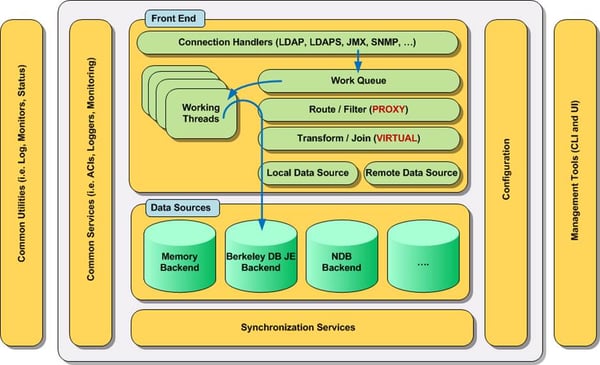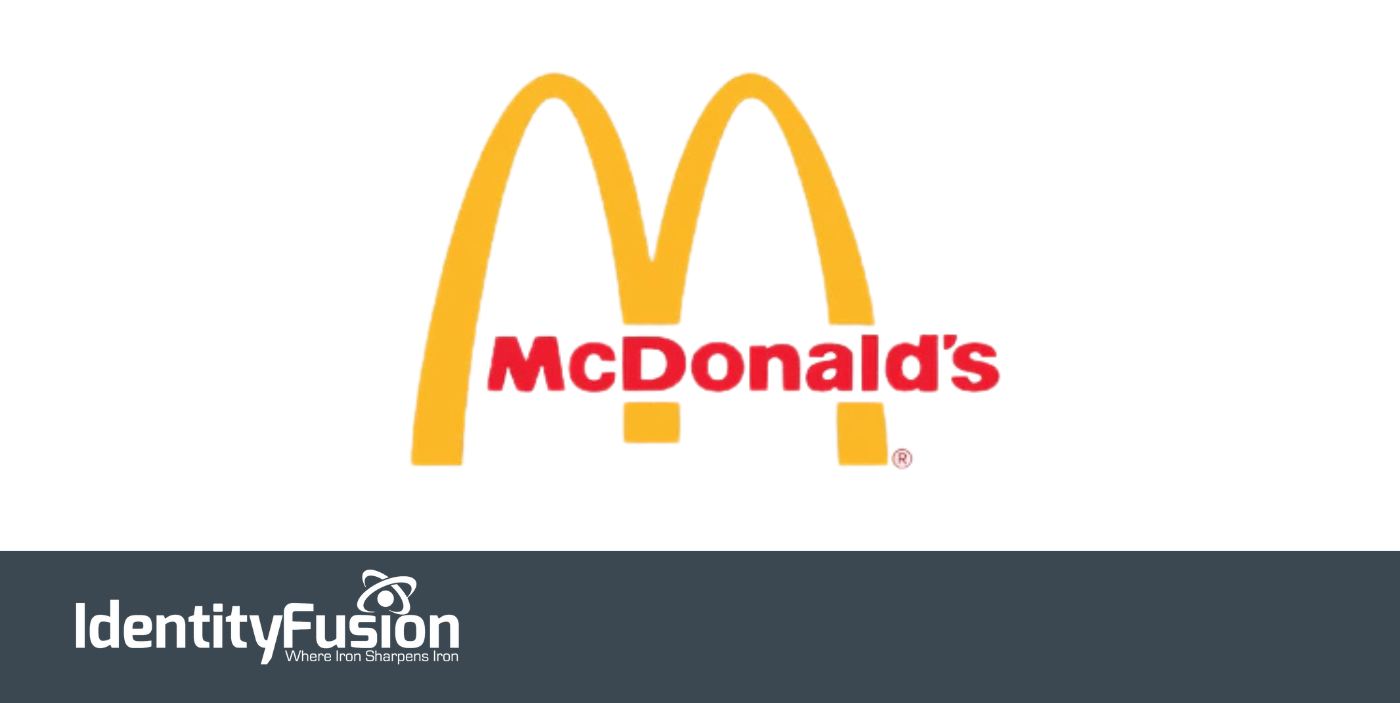The OpenDJ directory server is highly scalable and can process all sorts of requests from different types of clients over various protocols. The following diagram provides an overview of how OpenDJ processes these requests. (See The OpenDJ Architecture for a more detailed description of each component.)
Note: The following information has been taken from ForgeRock’s OpenDJ Administration, Maintenance and Tuning Class and has been used with the permission of ForgeRock.

Client requests are accepted and processed by an appropriate Connection Handler. The Connection Handler decodes the request according to the protocol (LDAP, JMX, SNMP, etc.) and either responds immediately or converts it into an LDAP Operation Object that is added to the Work Queue.
Analogy: I like to use the analogy of the drive-through window at a fast food restaurant when describing this process. You are the client making a request of the establishment. The Connection Handler is the person who takes your order; they take your request and enter it into their ordering system (the Work Queue). They do not prepare your food; their jobs are simply to take the order as quickly and efficiently as possible.
Worker Threads monitor and detect items on the Work Queue and respond by processing them in a first in, first out fashion. Requests may be routed or filtered based on the server configuration and then possibly transformed before the appropriate backend is selected.
Analogy: Continuing with the fast food analogy, the Worker Threads are similar to the people who prepare your food. They monitor the order system (Work Queue) for any new orders and process them in a first in, first out fashion.
Note: OpenDJ routing is currently limited to the server’s determination of the appropriate backend. In future versions, this may take on more of a proxy or virtual directory type of implementation.
The result is returned to the client by the Worker Threads using the callback method specified by the Connection Handler.
Analogy: Once your order is completed, the food (or the results of your request) is given to you by one of the Worker Threads who has been tasked with that responsibility. This is the only place where the analogy somewhat breaks down. In older fast food restaurants (ones with only one window) this may sometimes be the person who took your order in the first place. In our analogy, however, the Connection Handler never responds to your request. This model is more closely attuned to more recent fast food establishments where they have two windows and there is a clear delineation of duties between the order taker (Connection Handler) and the one who provides you with your food (the Worker Thread).
Other services such as access control processing (ACIs), Logging, and Monitoring provide different access points within the request processing flow and are used to control, audit, and monitor how the requests are processed.
So, what do OpenDJ and McDonald’s have in common? They are both highly efficient entities that have been streamlined to process requests in the most efficient manner possible.
Check out ForgeRock’s website for more information on OpenDJ or click here if you are interested in attending one of ForgeRock’s upcoming training classes.

